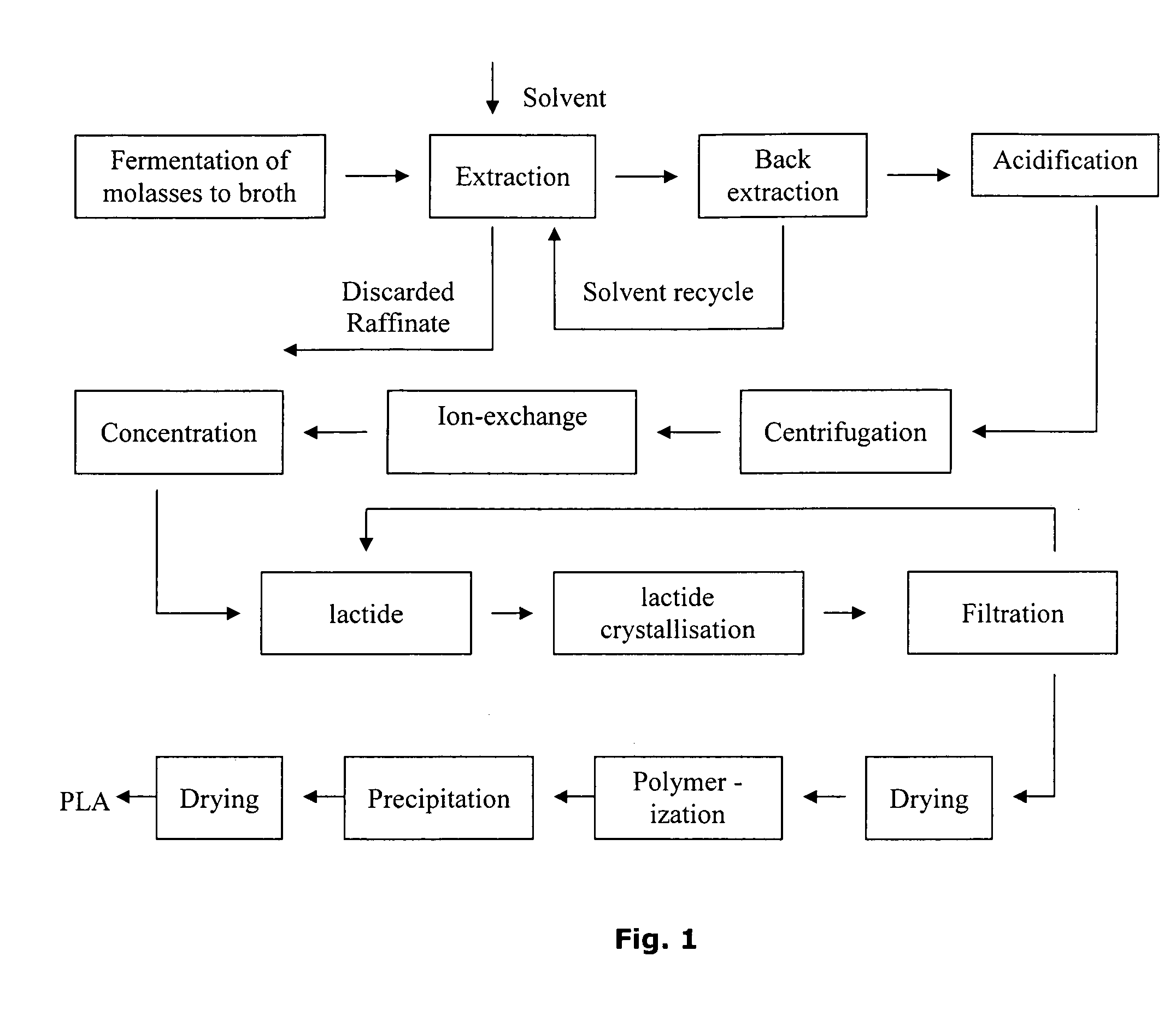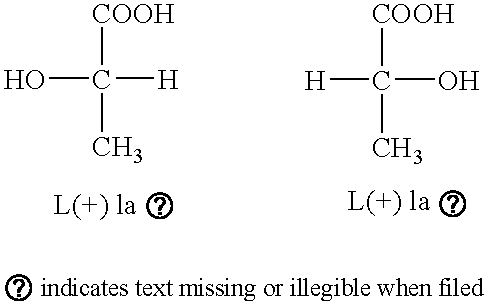Process for the production of polylactic acid (PLA) from renewable feedstocks
a technology of polylactic acid and renewable feedstocks, applied in the direction of fertilization, etc., can solve the problems of complex biochemical production of lactic acid, undesirable environmental concerns, calcium sulfate,
- Summary
- Abstract
- Description
- Claims
- Application Information
AI Technical Summary
Benefits of technology
Problems solved by technology
Method used
Image
Examples
example 1
[0076] To 250 ml of fermentation medium containing cane molasses adjusted to a final fermentable sugar concentration of 70 g / L and enriched with corn steep liquor (25 g / L) and yeast extract (10 g / L), 24 h old culture of Lactobacillus delbreuckii was added as inoculum at 10% final concentration. The fermentation was carried out in shake flasks at 42° C. for 72 h at 150 rpm in a Gallenkamp incubator shaker. The pH of the fermentation broth was maintained at 6.0 using CaCO3. The yield of lactic acid at the end of 72 h was 50 g / L.
example 2
[0077] A 2 L batch of the fermentation medium containing cane molasses and supplemented with 25 g / L corn steep liquor and 10 g / L yeast extract, was run in a 2.5 L bioreactor. The initial sugar concentration was adjusted to 70 g / L. The medium was inoculated with 200 ml of 24 h old culture of Lactobacillus delbreuckii. The fermentation was carried out at 42° C. for 48 h at 200 rpm agitation. The pH of the medium as maintained at 6.0 using liquid ammonia. The lactic acid yield was 66 g / L at the end of the run.
example 3
[0078] The lactic acid fermentation was scaled up in a 500 L fermentor with a working volume of 350 L. The medium containing cane molasses (adjusted to 70 g / L sugar), corn steep liquor (25 g / L) and yeast extract (10 g / L) was inoculated with 24 h old culture of L. delbrueckii (35 L) grown in a 100 L fermentor. The fermentation was carried out at 42° C. for 48 h at 200 rpm agitation with pH maintenance at 6.0 with liquid ammonia. The yield of lactic acid was 50 g / L.
PUM
| Property | Measurement | Unit |
|---|---|---|
| Temperature | aaaaa | aaaaa |
| Temperature | aaaaa | aaaaa |
| Temperature | aaaaa | aaaaa |
Abstract
Description
Claims
Application Information
 Login to View More
Login to View More - R&D
- Intellectual Property
- Life Sciences
- Materials
- Tech Scout
- Unparalleled Data Quality
- Higher Quality Content
- 60% Fewer Hallucinations
Browse by: Latest US Patents, China's latest patents, Technical Efficacy Thesaurus, Application Domain, Technology Topic, Popular Technical Reports.
© 2025 PatSnap. All rights reserved.Legal|Privacy policy|Modern Slavery Act Transparency Statement|Sitemap|About US| Contact US: help@patsnap.com


